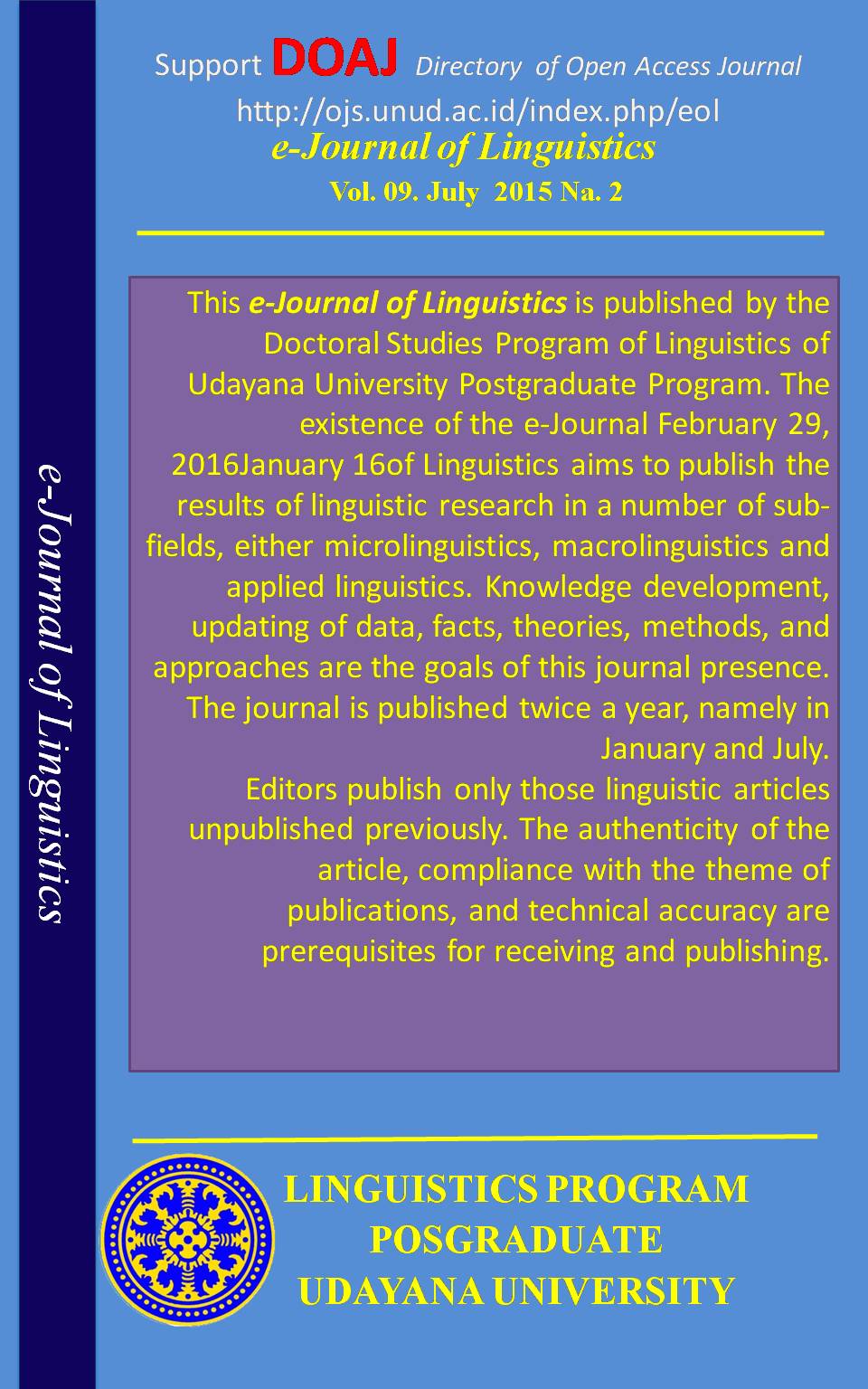VIOLATION OF CONVERSATION MAXIM ON TV ADVERTISEMENTS
Abstract
Maxim is a principle that must be obeyed by all participants textually and interpersonally in order to have a smooth communication process. Conversation maxim is divided into four namely maxim of quality, maxim of quantity, maxim of relevance, and maxim of manner of speaking. Violation of the maxim may occur in a conversation in which the information the speaker has is not delivered well to his speaking partner. Violation of the maxim in a conversation will result in an awkward impression. The example of violation is the given information that is redundant, untrue, irrelevant, or convoluted. Advertisers often deliberately violate the maxim to create unique and controversial advertisements. This study aims to examine the violation of maxims in conversations of TV ads. The source of data in this research is food advertisements aired on TV media. Documentation and observation methods are applied to obtain qualitative data. The theory used in this study is a maxim theory proposed by Grice (1975). The results of the data analysis are presented with informal method. The results of this study show an interesting fact that the violation of maxim in a conversation found in the advertisement exactly makes the advertisements very attractive and have a high value.
Downloads
Keywords

This work is licensed under a Creative Commons Attribution 4.0 International License











